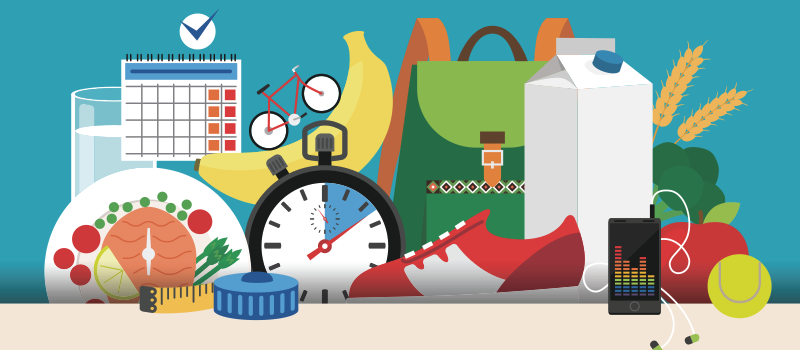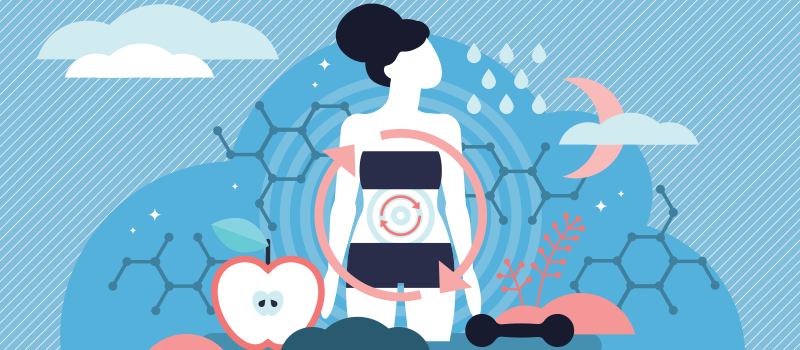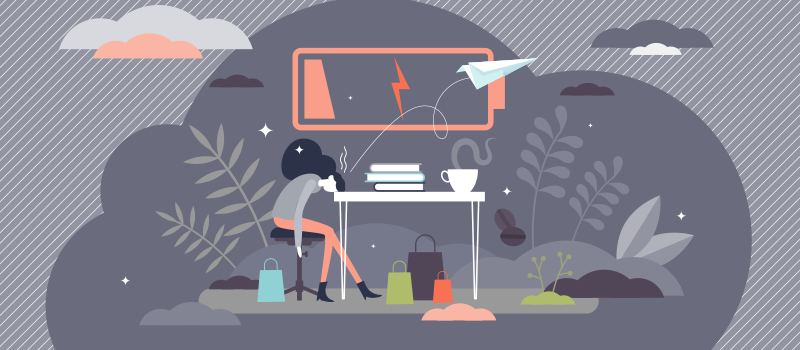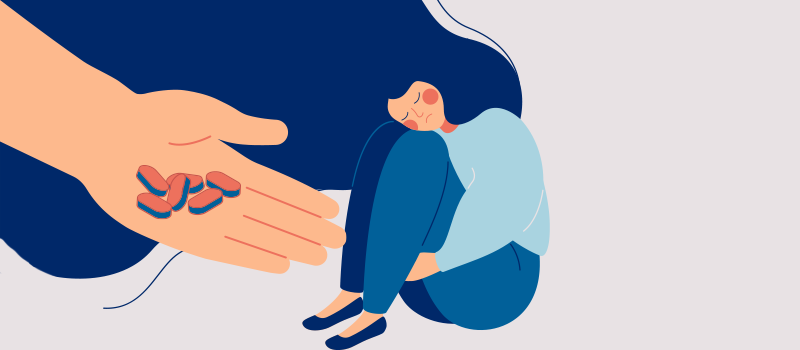What’s the Buzz
The Bee Healthy Blog
What Are the 10 Types of Depression?

It’s normal to feel down once in a while, but if you’re sad often and it’s affecting your everyday life, you could be suffering from a more serious disorder such as depression. If left untreated, depression can lead to serious health complications, including putting your life at risk. Fortunately, there are effective treatments for depression through options like therapy, medication, diet, and exercise. Mental health is just as important as your physical health—if you think you’re suffering from depression, be sure to seek professional help. Here are the 10 types of depression to look out for and their corresponding symptoms.
Types of Depression
1. Major Depressive Disorder (MDD)
According to The Anxiety & Depression Association of America, it’s estimated that 16.2 million adults in the United States, or 6.7 percent, have had at least one major depressive episode in a given year. While major depressive disorder can develop at any age, the median age of onset is 32.5 years old. Also referred to as clinical depression or major depression, major depressive disorder is a significant medical condition that can affect many areas of your life. It impacts mood and behavior as well as various physical functions, such as appetite and sleep[1].
Once you have had an episode of major depression disorder, you are at high risk of experiencing multiple episodes. For treatment, your doctor may prescribe medications such as selective serotonin reuptake inhibitors (SSRIs), and/or suggest psychotherapy such as cognitive-behavioral therapy (CBT). Lifestyle changes such as a healthier diet, exercise, and a sufficient amount of sleep can also help ease certain symptoms of major depression.
According to the DSM-5 , a manual used to diagnose mental health conditions, symptoms of major depression might include chronic:
- Fatigue or loss of energy
- Feelings of hopelessness and guilt
- Trouble concentrating
- Insomnia or oversleeping
- Loss of interest or pleasure in almost all activities
- Restlessness or feeling slowed down
- Recurring thoughts of death and suicide
- Weight loss or weight gain
2. Persistent Depressive Disorder
Persistent depressive disorder, also called dysthymia, is a continuous long-term form of depression. You may lose interest in normal daily activities, feel hopeless, lack productivity, have low self-esteem, and an overall feeling of inadequacy. These feelings last for years and may significantly interfere with your relationships, school, work, and daily activities[2].
If you have persistent depressive disorder, you may find it hard to be happy even during the “happiest times.” Because of the chronic nature of persistent depressive disorder, coping with depression symptoms can be challenging, but a combination of talk therapy and medication can be effective in treating this condition.
3. Bipolar Disorder
Bipolar disorder, also known as manic depression, is a mental illness that brings severe high and low moods and changes in sleep, energy, thinking, and causes erratic behavior[3]. People who have bipolar disorder can have periods in which they feel overly happy and energized and then periods of feeling sad, and hopeless. When they are not experiencing an episode, they typically feel normal.
Bipolar disorder is a lifelong condition. Treatment usually involves taking medications such as mood stabilizers, antipsychotics, antidepressants, and anti-anxiety pills to balance your moods right away. If you feel suicidal or become detached from reality (psychotic), getting psychiatric treatment at a hospital can help keep you calm, safe, and stabilize your mood.
4. Seasonal Affective Disorder (SAD)
Seasonal affective disorder, also known as seasonal depression or SAD, is a type of depression that is triggered by seasonal changes, most commonly occurring during the colder fall and winter months[4]. Depression can last throughout the year, but if your symptoms only appear during a particular season, you may be experiencing SAD. About six percent of the U.S. population experiences seasonal depression, and another 14 percent of the adult U.S. population suffers from a less intense form of seasonal mood changes, known as the winter blues[4].
In most cases, symptoms of seasonal affective disorder (SAD) begin during late fall or early winter and go away during the brighter days of spring or summer. Although less common, some may experience spring-onset SAD—depression that occurs during the warmer months.
According to Cedars Sinai, doctors believe that the lack of sunlight can trigger chemicals in the brain that can make you feel sluggish, sad, unmotivated, and essentially, depressed. Other common symptoms include oversleeping, appetite changes, weight gain, and tiredness. There are also studies linking melatonin, a sleep-related hormone, to SAD. Darkness prompts melatonin to be produced in the pineal gland in the brain. When the days are shorter and darker, more melatonin is made[5].
It’s normal to feel down once in a while, but if it’s a recurring feeling, you may want to seek treatment. Light therapy, exposure to sunlight, psychotherapy, medications, stress management, a healthy diet, and physical exercise are the most popular ways to treat seasonal affective disorder symptoms.
Dr. Norman E. Rosenthal, the psychiatrist who first identified SAD in the 1980’s recommends: “A 20-minute early morning walk in the sun is as good as commercial light therapy, but while morning is best, whenever you can do a walk is helpful. The combination of exercise and outdoor light is crucially important. It connects you with your environment — not just the light but also the birds, trees, animal life, neighborhood—all can act as an antidote to the cocoon of isolation[4]."
5. Psychotic Depression
Psychotic depression is a subtype of major depression that occurs when a severe depressive illness includes some form of psychosis such as experiencing hallucinations and delusions or some other break with reality. Psychotic depression affects roughly one out of every four people admitted to the hospital for depression[6]. Common symptoms include:
- Agitation
- Anxiety
- Constipation
- Hypochondria
- Insomnia
- Intellectual impairment
- Physical immobility
- Delusions or hallucinations
Treatment for psychotic depression is usually given in a hospital setting. That way, the patient has close monitoring by mental health professionals. Different medications are used to stabilize the person's mood, typically including a combination of antidepressants and antipsychotic medications[6].
6. Peripartum (Postpartum) Depression (PPD)
Peripartum depression refers to depression occurring during pregnancy or after childbirth. While it’s common to experience postpartum baby blues, postpartum depression is more extreme. This depression associated with having a baby often begins during pregnancy. An estimated one in seven women experiences peripartum depression. Peripartum depression is a serious, but treatable medical illness involving feelings of extreme sadness, indifference, and/or anxiety, as well as changes in energy, sleep, and appetite, carrying risks for the mother and child.
Postpartum depression can be treated with antidepressants and/or psychotherapy. In some cases, postpartum depression can continue, becoming chronic depression. It's important to continue treatment after you begin to feel better. Stopping treatment too early may lead to a relapse.
7. Premenstrual Dysphoric Disorder (PMDD)
Premenstrual dysphoric disorder PMDD is a more severe form of premenstrual syndrome PMS. Symptoms of PMDD occur in the late luteal phase of the menstrual cycle, just like PMS, but they are severe enough to affect day-to-day life. The regular PMS symptoms are more severe in PMDD, and the disorder is particularly characterized by psychological symptoms such as[7]:
- Depression
- Suicidal ideation or attempts
- Anxiety
- Irritability
- Tension and hypersensitivity
- Difficulty concentrating
- Lack of energy
- Extreme appetite changes
- Hypersomnia/Insomnia
- Sense of being overwhelmed or out of control
Only about 5% of women are diagnosed with PMDD compared with 85% of women who experience PMS. It is thought that certain risk factors predispose a woman to PMDD much like other mental or mood disorders. For instance, women with a history of stress or trauma may be more likely to experience PMDD during their lifetime. This risk is higher in women who do not use oral contraceptives to control menstrual symptoms and may be up to 50% more likely in women whose mothers experienced PMDD.
Your physician must first confirm the presence of at least five symptoms over a prescribed period of time that cannot be attributed to PMS. Second, your physician will determine whether your symptoms are an exacerbation of another disorder or caused by substance use. Finally, your physician will determine if PMDD is affecting you along with other mental or mood disorders, or if your serious symptoms are only caused by PMDD. This will affect treatment.
Though a PMDD diagnosis is as serious and as scary as any other mental or mood disorder, it is treatable. Certain SSRIs can be prescribed to treat PMDD symptoms, often only required during the week prior to an expected cycle. Other options include birth control pills, oophorectomy (surgical removal of the ovaries), and psychotherapy. It’s up to you to work with your physician to determine the best course of treatment.
8. 'Situational' Depression
Situational depression is a short-term, stress-related type of depression. It can develop after you experience a traumatic event or series of events. Situational depression is a type of adjustment disorder. It can make it hard for you to adjust to your everyday life following a traumatic event. It’s also known as reactive depression.
Events that can cause situational depression include:
- Problems at work or school
- Illness
- Death of a loved one
- Moving
- Relationship problems
9. Atypical Depression
Atypical depression is a subtype of major depression or dysthymic disorder that involves several specific symptoms, including increased appetite or weight gain, sleepiness or excessive sleep, marked fatigue, or weakness. Other symptoms of atypical depression include:
- Feelings of hopelessness
- Suicidal thoughts
- Oversensitivity to criticism
One of the main characteristics of atypical depression is your reaction to positive circumstances. Someone suffering from atypical depression will not see a change in mood even if something “good” happens to them.
Depending on the serenity of atypical depression, treatment usually involves psychotherapy and medication.
10. Disruptive Mood Dysregulation Disorder (DMDD)
DMDD is a fairly recent diagnosis, classified as a type of childhood condition of extreme irritability, anger, and frequent, intense temper outbursts. The symptoms of DMDD go beyond a “bad mood.” DMDD symptoms are severe. Youth who have DMDD experience significant problems at home, at school, and often with peers. They also tend to have high rates of health care service use, hospitalization, and school suspension, and they are more likely to develop other mood disorders[8]. DMDD can be treated with cognitive-behavioral therapy, and sometimes medications.
If you are feeling symptoms of depression, it’s important to seek treatment before it can get worse. Everyone can feel sad from time to time, and depression isn’t something to feel ashamed about. It’s important to find out if you're suffering and how to get proper treatment.
[1] https://www.healthline.com/health/clinical-depression#treatment
[3] https://www.webmd.com/bipolar-disorder/mental-health-bipolar-disorder#:~:text=Bipolar%20disorder%2C%20also%20known%20as,sad%2C%20hopeless%2C%20and%20sluggish.
[4] https://www.ncbi.nlm.nih.gov/pmc/articles/PMC2686645/#B
[6] https://www.webmd.com/depression/guide/psychotic-depression
[8] https://www.nimh.nih.gov/health/publications/disruptive-mood-dysregulation-disorder/











SOCIAL